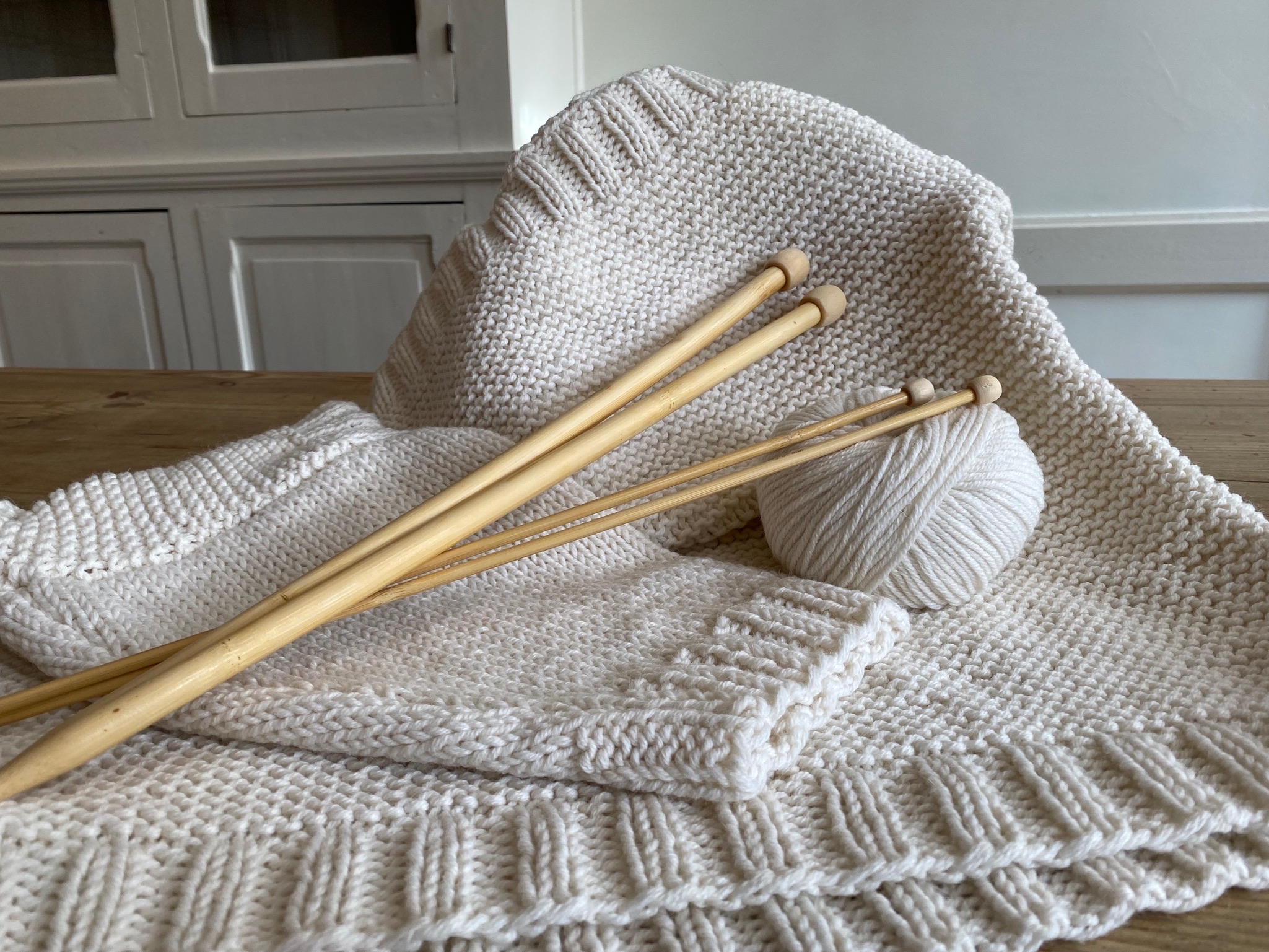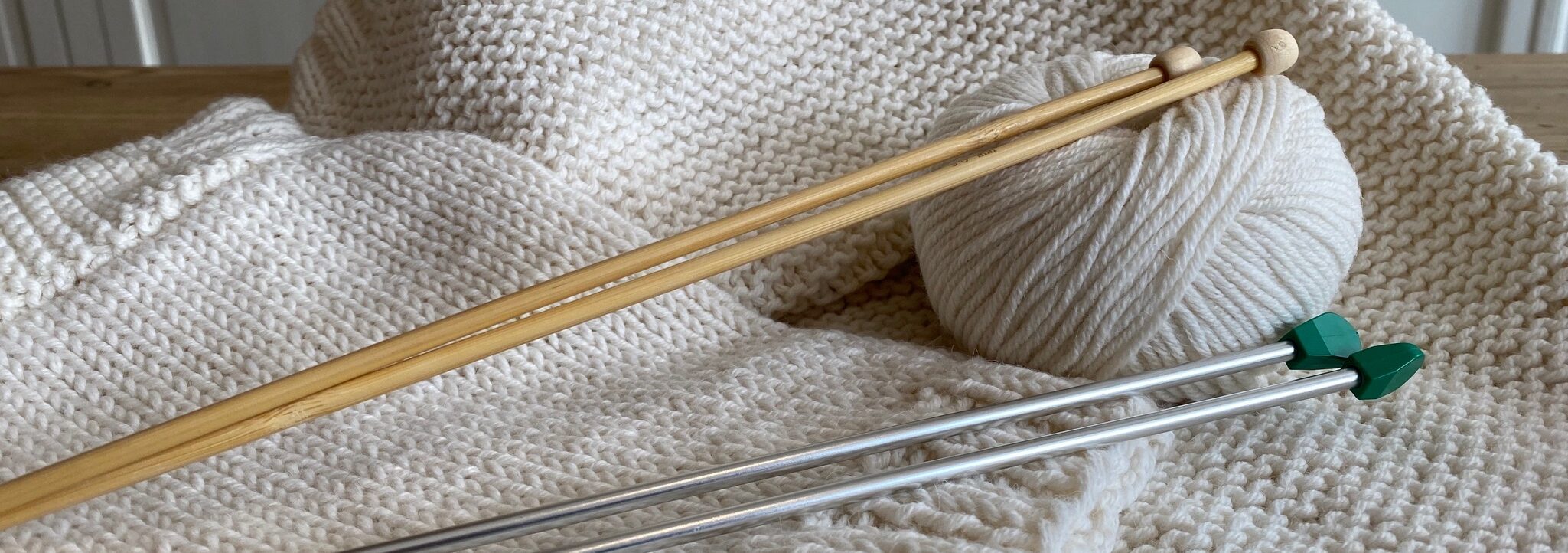
As a knitting enthusiast, you know that the choice of needles is essential to the successful completion of any project! There are knitting needles of all sizes, all diameters and even different materials. Your choice will depend on your level (beginner, intermediate, expert), your preferences (type of wool, material, specific project,...) and your way of knitting (loose, tight,...). Today, in this article, we are going to tell you a little more about knitting needles so that you can find THE right pair of needles.
First of all, there are 3 main categories of knitting needles:
Also, for specific knitting and crochet projects or stitches, there are other types of needles such as twisting needles, lace forks, Tunisian hooks and many others that you can find on our website in the sections Other needles or Other accessories.

Then, you need to know that knitting needles are based on a simple numbering system with a diameter ranging from 2 to 25. To choose the size of needles you need, you must first know if you are a beginner or an advanced knitter. We invite you to take a look at our knitting essentials, where we recommend a minimum size 5 needle for beginners. Then, for the more experienced among you, the choice of needle size will depend on your preferences but also on your way of knitting: loose or tight. If you prefer to knit loosely, we recommend larger needles and smaller needles if you prefer to knit tightly.
In addition to the diameter of the needles, you should also consider their length. Did you know that the world record for the longest knitting needle is 3.5 meters? Not to hide anything, needles of this size are reserved for the world champions of knitting ;)
Otherwise, most of the time, needles are between 20 and 40 cm long. If you are an expert knitter, you may be used to tucking the needles under your arms, so it is best to use 40 cm long needles. However, for beginners, we advise you not to complicate your task with long needles, smaller ones such as 30 cm needles will do perfectly well !
There are several types of knitting needles, in different materials, but the most popular are plastic, aluminum and bamboo needles.
Regarding plastic needles, they are recommended for beginners because they are very light and easy to handle. They also allow you to knit models with thick wool. Be careful though, they may become stained and/or twisted over time. At La Lainière de Wazemmes, all our classic straight needles from size no. 8 to size no. 25 are made of plastic.
Then, bamboo needles have the great advantage of being very light, more so than metal needles. They are also quite slippery. They don't stain but may warp a little over time if you knit heavy projects with them. They are also more expensive than plastic or aluminum needles because bamboo is a natural material and its production is different. At La Lainière de Wazemmes, we offer 40 cm straight bamboo needles in sizes 3 to 12.
There are also wooden needles which have the same advantages as bamboo needles. In fact, they are ideal for knitting enthusiasts with fragile wrists because they are lighter than metal needles. Beech wood, for example, is dense and light and has the advantage of not producing splinters. Additionally, unlike metal needles, wooden ones do not bend. They do not slide as much as metal or plastic needles but are perfect for working with certain threads such as silk which tend to slip a lot. However, wooden needles, especially small ones, tend to break.
Finally, metal needles are heavier and colder than plastic ones but much more slippery and durable. Indeed, the smoother surface of metal needles allows for faster knitting because the stitches can slide without friction, which makes them the preferred choice of the most experienced knitters. Metal needles are suitable for all types of yarn, but work best with wool (including wool blends) and acrylic. These are the metal needles that have the sharpest points, making them particularly suitable for lace knitting. They are often made of aluminum, stainless steel, brass or nickel.
To conclude, it is not that difficult to start with aluminum needles because the yarn will easily slide over the needles to cast on your stitches and knit your rows. Unlike plastic, aluminum needles are solid and quite durable over time. With us, all of our classic straight needles from size 2 to 7 are made of metal.
At La Lainière de Wazemmes, we have a wide choice of straight or circular needles, single or double pointed, in metal or plastic, in 30 or 40 cm, from size 2 to size 12. You will inevitably find them knitting needles you need! Now that you know all the information about knitting needles and you have all the cards in hand to create the most beautiful work! 3, 2, 1... On your needles!

You can contact us in private message via our social networks Facebook and Instagram Facebook et Instagram, or through the chat bubble at the bottom right of your screen right now. You can also reach us by email lainieredewazemmes@gmail.com or by phone at 03.20.57.09.46.
See you soon, for new knitting tips, with La Lainière de Wazemmes !